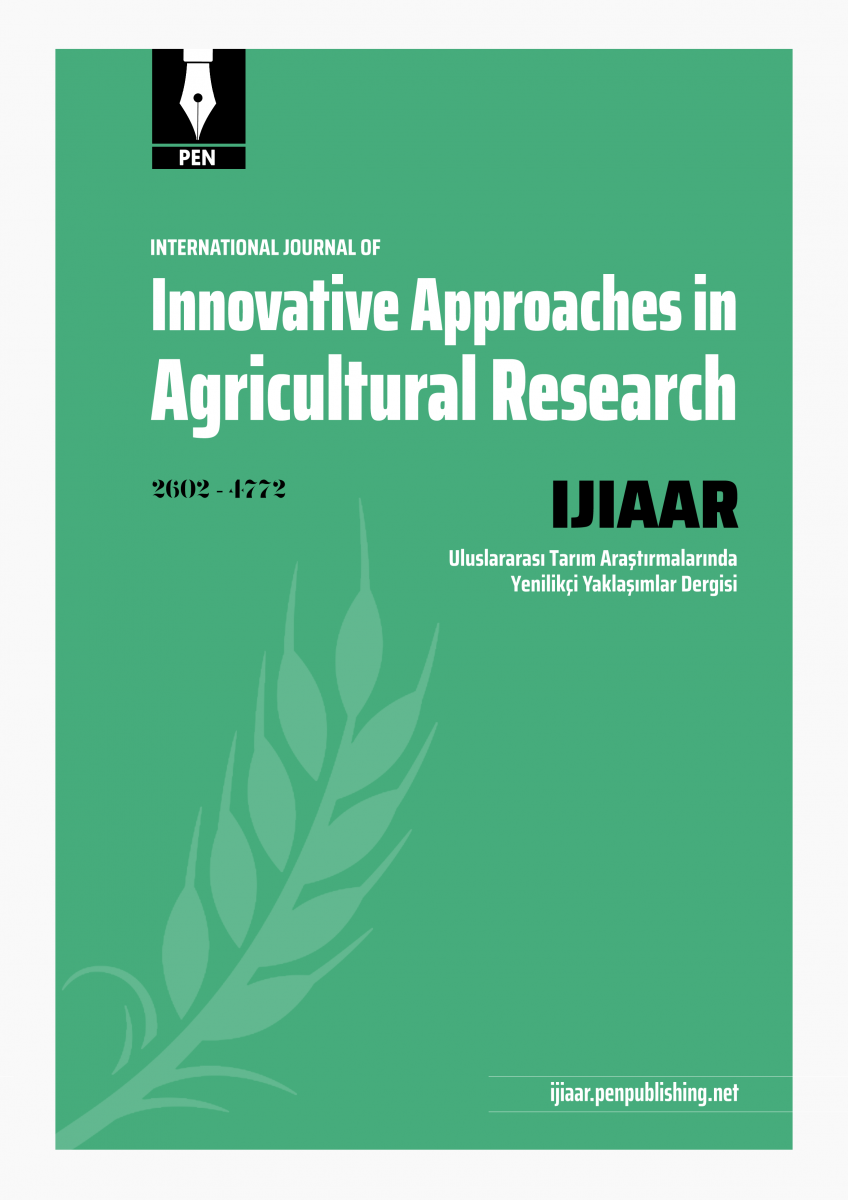Original article | Open Access
International Journal of Innovative Approaches in Agricultural Research 2019, Vol. 3(4) 566-577
Allelopathic Effects of Pigweed (Amaranthus viridis L.) on Seed Germination and Seedling Growth of some Leguminous Crops
pp. 566 - 577 | DOI: https://doi.org/10.29329/ijiaar.2019.217.3
Published online: December 10, 2019 | Number of Views: 278 | Number of Download: 737
Abstract
Laboratory and greenhouse experiments were carried out at the Faculty of Agricultural Sciences, University of Gezira, Sudan in season 2014/15. Laboratory experiments were conducted to study the allelopathic effects of aqueous extract of aboveground parts of pigweed (Amaranthus viridis L.) on seed germination of common bean (Phaseolus vulgaris L.), cowpea (Vigna sinensis [L.] Walp.), pigeon pea (Cajanus cajan [L.] Millsp.) and alfalfa (Medicago sativa L.). Six concentrations (0, 20, 40, 60, 80 and 100%) of the aqueous extract of aboveground parts were prepared from the stock solution (50 g / l). Treatments, for each crop, were arranged in completely randomized design with four replicates. The seeds were examined for germination at three days after initial germination. Greenhouse experiments were conducted to study the allelopathic effects of powder of aboveground parts of pigweed on seedling growth of the same crops. Powder of aboveground parts was incorporated into the soil at rate of 0, 1, 2, 3, 4 and 5% on w/w bases in pots. Treatments, for each crop, were arranged in completely randomized design with four replicates. Experiments were terminated at 30 days after sowing and plant height, number of leaves and root length of crop seedlings were measured as well as plant fresh and dry weight. Data were collected and subjected to analysis of variance procedure. Means were separated for significance using Duncan`s Multiple Range Test at p 0.05. The results showed that the aqueous extract of aboveground parts of pigweed significantly reduced seed germination of the tested leguminous crops and there was direct negative relationship between concentration seed germination. Also, the results showed that incorporating powder of aboveground parts into the soil significantly decreased plant height and root length of crop seedlings as well as seedling fresh and dry weight. In addition, the reduction in seedling growth was increased as the powder increased in the soil. Based on results supported by different studies, it was concluded that pigweed has allelopathic affects on seed germination and seedling growth of the leguminous crops.
Keywords: allelochemicals, allelopathic, alfalfa, Amaranthus, common bean, cowpea, leguminous, pigeon pea, pigweed
| How to Cite this Article |
|---|
|
APA 6th edition Harvard Chicago 16th edition |
| References |
|---|
|

